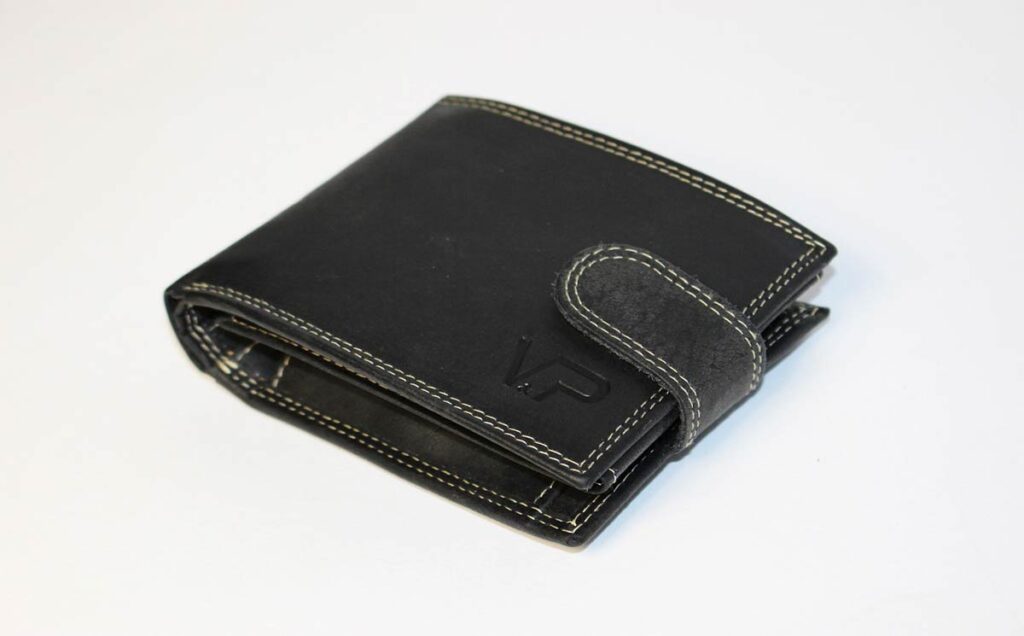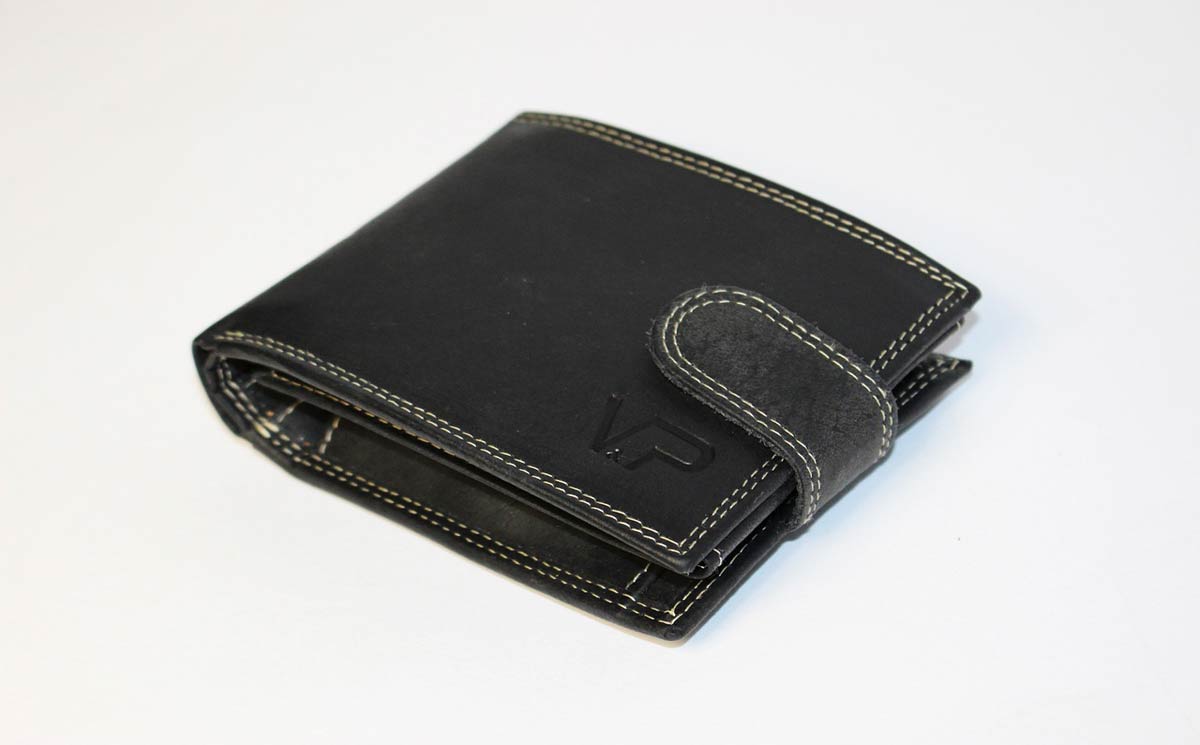As an Amazon Associate I earn from qualifying purchases. Learn More.
Leather wallets need special storage methods because of their different texture. Properly storing your leather wallets is essential to ensure their longevity and pristine condition. Leather wallets are not only functional accessories but also investment pieces that deserve proper care.

Whether you’re switching between wallets or looking to store them long-term, the right techniques can prevent creases. Moreover, it can prevent discoloration and deterioration. Let’s see a step-by-step approach to storing leather wallets, preserving their aesthetic appeal and durability for years to come.
Do You Need to Store Leather Wallets?
Storing leather wallets properly is essential to maintain their quality and extend their lifespan. Leather is a natural material that can be susceptible to damage if not stored correctly. Let’s see some reasons why you need to store leather wallets.
- Preventing Creases and Wrinkles
Leather wallets can develop unsightly creases and wrinkles if stored haphazardly. Proper storage helps to maintain their shape and prevent permanent damage.
- Avoiding Discoloration
Exposure to sunlight and moisture can cause leather to fade or develop uneven discoloration. Storing wallets in a controlled environment helps retain their original color and finish.
- Preserving Texture and Softness
Leather’s texture and softness can be affected by improper storage. It leads to a rough or hardened feel. Well-stored wallets remain supple and comfortable to use.
- Preventing Scratches and Scuffs
Keeping leather wallets away from sharp objects and abrasive surfaces prevents scratches and scuffs that can mar their appearance.
- Maintaining Structural Integrity
Proper storage prevents stress on seams, stitching, and closures, ensuring the wallet’s overall structural integrity remains intact.
- Minimizing Moisture Damage
Dampness and humidity can lead to mold growth and deterioration of leather. Storing wallets in a dry environment prevents moisture-related issues.
- Longevity and Value Retention
Investing in a quality leather wallet warrants the effort of proper storage. By extending its lifespan, you maximize the value of your investment.
If you want to maintain the aesthetic appeal and functional aspects of leather wallets, store them in a cool, dry place. Moreover, keep them away from direct sunlight and extreme temperatures.
Using protective pouches or cloth bags can further shield them from dust and potential scratches.
How to Store Leather Wallets?
Properly storing leather wallets is a must if you want to maintain their quality features. Here’s a step-by-step guide on how to store leather wallets effectively.
Step-1: Clean and Prepare
Before storing, ensure the wallet is clean. Wipe off any dirt or debris using a soft, slightly damp cloth. Allow it to air dry completely.
Step-2: Empty Contents
Remove all cards, cash, and other items from the wallet. This prevents unnecessary stress on the leather and helps it retain its shape.
Step-3: Condition the Leather
Apply a leather conditioner to the wallet to keep the leather moisturized and supple. Use a product specifically designed for leather goods and follow the manufacturer’s instructions.
Step-4: Choose the Right Storage Location
Select a cool, dry place for storage. Avoid direct sunlight, extreme temperatures, and areas with high humidity. Exposure to these elements can cause leather to fade, crack, or develop mold.
Step-5: Use a Cloth Pouch or Bag
Place the wallet in a breathable cloth pouch or bag. This protects it from dust, scratches, and potential moisture while allowing the leather to breathe.
Step-6: Avoid Overcrowding
Do not stack heavy items on top of the stored wallet. Overcrowding can lead to deformation and creasing of the leather.
Step-7: Maintain Proper Shape
If your wallet has a specific shape, such as a bifold or trifold design, maintain that shape while storing it. You can use tissue paper or bubble wrap to fill the empty spaces and preserve the wallet’s form.
Step-8: Regularly Rotate
If you have multiple leather wallets, consider rotating their usage. This prevents the overuse of a single wallet and distributes wear and tear evenly.
Step-9: Check Periodically
Even during storage, periodically inspect the wallet for any signs of mold, discoloration, or deterioration. If you notice any issues, take appropriate action immediately.
Step-10: Avoid Plastic and Airtight Containers
Leather needs to breathe, so avoid storing wallets in plastic bags or airtight containers, as these can trap moisture and lead to mold growth.
Step-11: Keep Away from Pets
If you have pets, store your leather wallet in a place where they can’t reach it. Leather can be attractive to animals and may become a target for chewing or scratching.
Can You Store Leather Wallets in Plastic Containers?
It is not recommended to store leather wallets in plastic containers. Leather is a natural material that requires proper ventilation to prevent moisture buildup. Storing leather wallets in airtight plastic containers can trap humidity and lead to the growth of mold or mildew.
Mold or mildew can irreversibly damage the leather’s quality and appearance. Additionally, plastic containers may not provide the necessary protection against dust and scratches.
For optimal leather wallet storage, choose breathable options like cloth pouches or bags. These allow air circulation while still providing protection. If you’re concerned about moisture, consider placing a silica gel packet or a cedar block near the stored wallets to help absorb excess humidity.
Proper storage in a cool, dry place away from direct sunlight and extreme temperatures will help maintain the longevity and condition of your leather wallets.
What Is the Best Way to Store Leather Wallet?
The ideal method for storing a leather wallet involves preserving its quality while safeguarding it from potential harm. This entails maintaining a balance between protection and allowing the leather to maintain its natural properties.
Begin by gently cleaning the wallet to remove dirt and residues. Ensure it is thoroughly dry before proceeding. Empty the contents to prevent undue stress on the leather. To prevent the leather from drying out, apply a leather conditioner to keep it supple and resilient.
Select an appropriate storage location. It can be preferably a place with controlled temperature and humidity levels. Shield the wallet from direct sunlight, as well as extreme heat or cold. When it comes to containment, look for a breathable pouch or bag that safeguards against dust and scratches. Avoid plastic containers, which can hinder ventilation and potentially lead to moisture-related damage.
If your wallet has a specific shape, maintain it by using tissue paper or bubble wrap to prevent creasing. Regularly inspect the wallet for signs of wear, mold, or discoloration. If storing the wallet for an extended period, consider acid-free tissue paper and a breathable box for added protection.
However, the key to optimal leather wallet storage lies in the balance between protection and breathability, regular maintenance, and a controlled environment. By adhering to these principles, you can ensure your leather wallet remains a durable and stylish accessory for years to come.
Final Words
The way you store your leather wallet significantly impacts its longevity and appearance. By embracing a thoughtful approach that combines cleanliness, conditioning, appropriate storage, and regular checks, you can keep your wallet’s value.
The careful balance of protection, ventilation, and mindful consideration of environmental factors ensures your leather wallet remains a cherished accessory. This will also continue to exude style and functionality over time.
